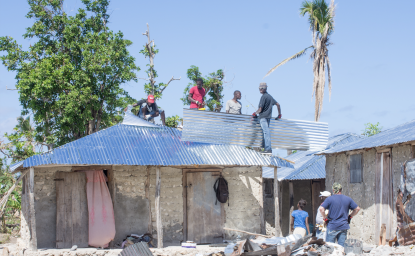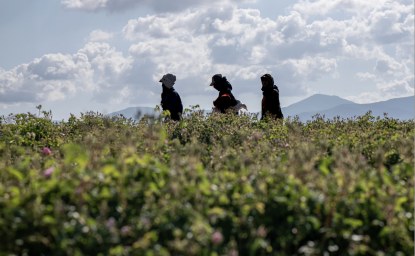As Angola recovers from 30 years of civil war, the country faces a new enemy. The civil war isolated Angola from neighboring countries with some of the highest HIV infection rates in the world. But peace has opened Angola's borders, and soldiers-some of them HIV-positive-are returning home. To avoid its neighbors' plight, the Angolan military has urged its solders to defend the country by "carrying a gun in one hand, a condom in the other."
In developing nations plagued by HIV/AIDS, peacetime military infection rates are estimated to be 2 to 5 times higher than the national average and are perhaps even greater during wartime. Members of the uniformed services are particularly vulnerable to infection, since many are young and sexually active, often deployed away from home, and used to taking risks.
In countries with weak political or social systems, the military can play a vital role in maintaining social and political stability. If the military is weakened by illness, the loss of key personnel, or a lack of new recruits, the nation might be more vulnerable to civil conflict or invasion. Recognizing this problem, the United Nations Security Council adopted a resolution in 2000 encouraging the development of comprehensive strategies for HIV/AIDS education, prevention, testing, and treatment of national uniformed services and international peacekeepers-its first-ever resolution on a health issue.
Some developing countries with such defense-sector education programs are starting to show results. With funding from the U.S. Agency for International Development, Angola's program trained peer educators and military health providers in HIV prevention and treatment and established testing sites near the country's borders. The educators reached more than 40,000 soldiers and significantly increased the demand for condoms and HIV testing.
Removing the stigma of HIV/AIDS increases the effectiveness of testing and treatment programs. Steven Talugende, a captain in the Ugandan military who is living with HIV/AIDS, said the efforts of the Ugandan Army's Post-Test Club to reduce discrimination suffered by infected soldiers have cut the military's HIV-prevalence rate. "The Club," he said, "builds confidence and hope, maintains the military's professionalism, and is cost-effective."
The highly structured military environment may provide a controlled laboratory for HIV-prevention strategies that seek to change behavior. According to the Civil-Military Alliance to Combat HIV & AIDS, the armies of Senegal, Thailand, Tanzania, and Zambia led the development of HIV-prevention programs in their nations. Militaries can also use their status to lead by example and help change social norms of sexual behavior.
Former U.S. Ambassador Richard Holbrooke declared AIDS "as great a security challenge as we have faced since the founding of the [UN] Security Council." Innovative efforts by developing-country militaries call on citizens, soldiers, and leaders to declare war on HIV/AIDS-a battle they must win.




